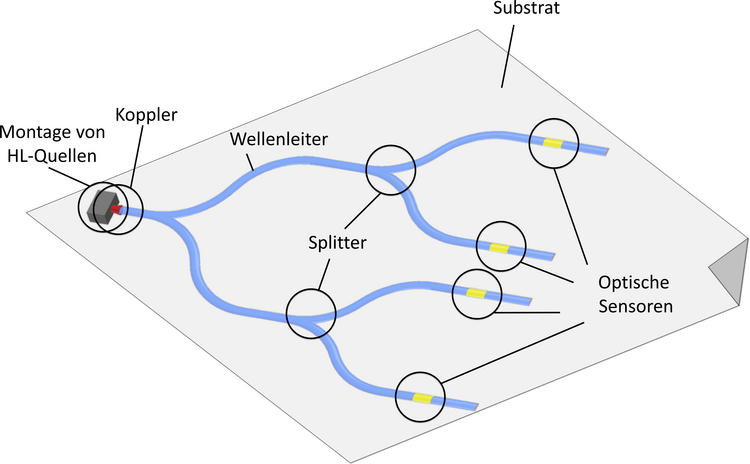PhoenixD - Flexographic printing of optical networks

| Led by: | Keno Pflieger |
| E-Mail: | keno.pflieger@ita.uni-hannover.de |
| Year: | 2019 |
| Duration: | 01/2019 - 06/2023 |
(Kopie 1)
The PhoenixD research vision is to implement precision optical systems resource and cost-effectively by using additive manufacturing technology. For this purpose, researchers from mechanical engineering, physics, electrical engineering, computer science and chemistry intend to work together on the simulation, production and application of optical systems. So far, such systems usually consist of glass-based components tediously assembled in small batches, often even by hand. Experts from the various disciplines will aim to work together on a digitized production system that can realize individualized products. In this subproject, the production of planar optical network structures is being researched. For this purpose, a classic printing processes, the flexo printing, is used to enable a cost-effective production.
Flexographic printing is a high-pressure process which is usually used for the printing of packaging. A printing plate that is clamped onto a cylinder works similarly to a stamp. The projecting structures, which were structured according to the desired print motif, are first moistened with paint. The subsequent rolling then leaves the desired coating with lacquer on the substrate. The possibility of manufacturing electronic circuits by means of printing has recently been examined. In this sub-project, flexographic printing is now used to also explore the realization of optical functions.
Flexographic printing provides the advantage that the process has a very large throughput (up to 15,000 sheets per hour) and thus very low cost per sheet can be realized. Furthermore, flexographic printing machines are also available all over the world in large quantities, so that a proven production process is industrially feasible.
Funded by: the Deutsche Forschungsgemeinschaft (DFG, German Research Foundation) under Germany’s Excellence Strategy within the Cluster of Excellence PhoenixD (EXC 2122, Project ID 390833453)




















